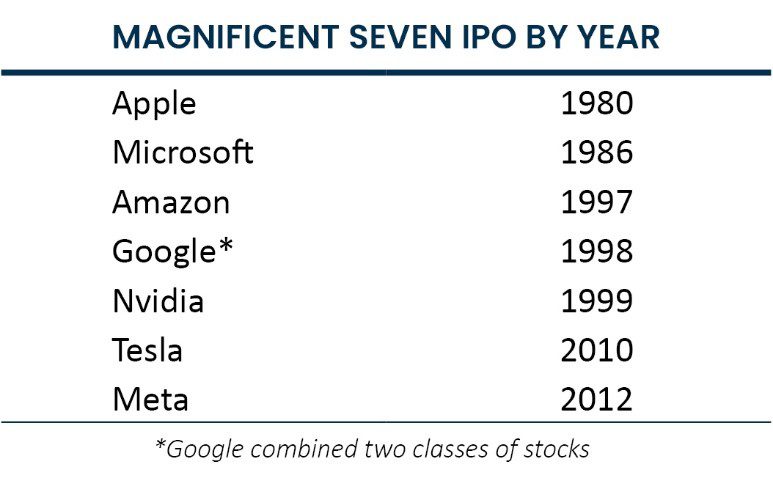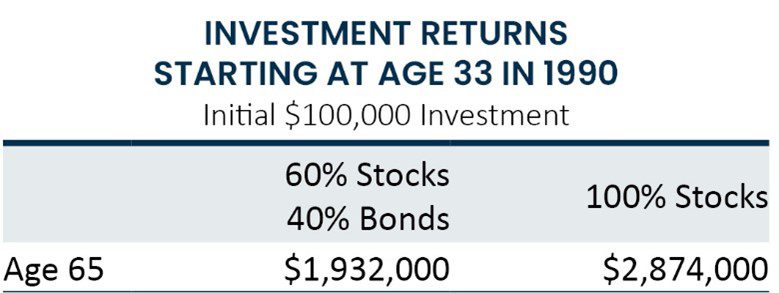The stock market has entered into the Golden Age in its long history which dates back to 1896 when Charles Dow introduced the Dow Jones Industrial index consisting of 12 stocks. Most investors are unaware that the S&P 500 has produced an above-trend annualized return of 11.6% since 1982 compared to its historic norm of 10.2% over the past century.
The higher return may not seem like much on the surface, but when compounded over 20 years, the differential in returns results in a sizable amount of wealth. A $100,000 investment compounded at 10.2% over 20 years would grow to $700,000 whereas the same amount compounded at 11.6% would grow to $900,000. Albert Einstein regarded the concept of compounding as “the 8th wonder of the world”.
GOLDEN AGE OF THE STOCK MARKET HAS ARRIVED
The Golden Age of the Stock Market is running parallel to the current Golden Age of the US Economy. In the most simplistic form, the stock market is a reflection of economic activity. Economic expansions have become longer since 1982 which has bolstered the stock market. For example, eight economic expansions since World War II have averaged 45 months or more than 3 years. Since 1982, four expansions have averaged 103 months or more than 7 years.
The World Economic Forum has dubbed the current economic environment driven by technological innovation as the “Fourth Industrial Revolution”. Technology and globalization have enabled some sizable companies to grow at never-before-seen sales growth rates. Hypergrowth companies were defined in 2008 in the Harvard Business Review as those companies that have generated sales growth of at least 40% plus rates over a string of quarters. Such companies were attached with the hypergrowth label.
Let’s take a look at the IPOs of the “Magnificent Seven” companies to better understand the driving force behind the Golden Age of Stocks. At the end of 2023, all seven stocks were ranked among the top seven by market cap in the S&P 500 Index. It should be kept in mind that it took nearly 100 years for General Electric as a public company to again attain top seven distinction whereas CISCO did it in 10 years and Microsoft in 14 years.


THE PENALTY OF OWNING BONDS
Stocks have provided much greater returns than bonds over most periods during the past century. Yet there is a fixation by investors in holding bonds in their portfolios for two reasons, to diversify and to reduce risk. The typical investor, according to Personal Capital, starts investing at the age of 33 and frequently adopts the standard 60:40 portfolio mix of stocks and bonds. The typical investor has more than 30 years until retirement and is giving up an enormous opportunity cost which is rarely addressed.
After reaching the common retirement age, many investors often transition to less risky investment profiles and go heavy into fixed income securities which is a mistake in this writer’s view. Target Date portfolios are proffered by many advisory firms which sometimes specify a 75% allocation to fixed income assets to include bonds, money market funds and cash.
Very frequently, retirees run out of money to sustain their standard of living. The National Institute on Retirement Security reports that a mere 7% of the older generation can sustain their standard of living throughout their retirement years. And much of the reason is related to their asset mix emphasizing fixed income securities.
This writer has firsthand experience in retirees running out of money. My wife and I lived in a nirvana setting on a barrier resort island off the coast of South Carolina and were part of a gourmet group consisting of five couples. The group gathered once a month and menus were prepared at least one week in advance for the upcoming feast which rivaled any restaurant in the area. As time went by, three of the couples were forced to leave the island because they were running out of money. Long story short, a multitude of retirees will run into this same problem based on their heavy exposure to fixed income assets.
Investing can become a perplexing undertaking in the opinion of this advisor. People spend most of their careers trying to make as much money as possible, however, the focus frequently switches to not losing money when investing. Rarely are opportunity costs considered, which can be substantial. Let’s take a look at two different investing profiles for the typical 33 year old, the 60:40 stocks and bonds mix versus being 100% invested in stocks until age 65.


Since 1936, the stock market has produced positive 10-year returns in 85 of 87 periods. There were only two exceptions, 10 years ending 2008 and 2009, which contained two of the worst four- bear markets since the Great Depression. Going out one additional year would bring the positive return percentage up to 100% proving that risk in the stock market dissipates over time.
We commented earlier on the evolving Golden Age of the Stock Market. Bull markets prior to 1982 provided a cumulative return of 110% on average. Since 1982, four bull markets have returned 220% which begs the question “how high can this bull market go?”
THIS BULL MARKET HAS MUCH MORE ROOM TO RUN
We make no forecast and have no opinions in our investment work. Instead, we rely upon history as a guide to future expectations. Every idea or action that we take comes from our research which rests on a statistical foundation.
Bull markets since World War II have averaged a cumulative return of 156% over 57 months but have averaged a much longer duration since 1982 as mentioned. Currently, this bull market is almost exactly two years old. So, what is possible for the remainder of current bull market cycle.
The last two bear markets were benign by historical standards as the 2020 bear market lasted just two months and the recent 2022 bear market last nine months. We used the term benign because bull markets have averaged 13 months accompanied by a 33% decline in the S&P 500 Index in the past. We think that these occurrences represent strong underpinnings in the current golden age for stocks.
The S&P 500 Index hit bottom on October 12, 2022, at a reading of 3,577, down only 19% from its peak in January of the same year. Assuming an average gain of 156% (average for 13 bull markets since WWII) off the market low would bring the S&P 500 to roughly 9600 before this bull market cycle ends. The S&P 500 now stands around 5,700, so there appears to be ample opportunity for further sizable gains before this bull market runs out of steam.
Robert Zuccaro, CFA is the Founder & CIO of Golden Eagle Strategies. Over the course of his 40 year investment management career, Robert has managed market leading institutional portfolios and four mutual funds. He is one of the most successful investment managers having been named a top 10 manager in numerous years by the Wall Street Journal and Lipper. He’s also been cited for outstanding performance by Financial World, Wall Street Journal, and Business Week.
Email: [email protected] / phone: (561) 510-6606


















